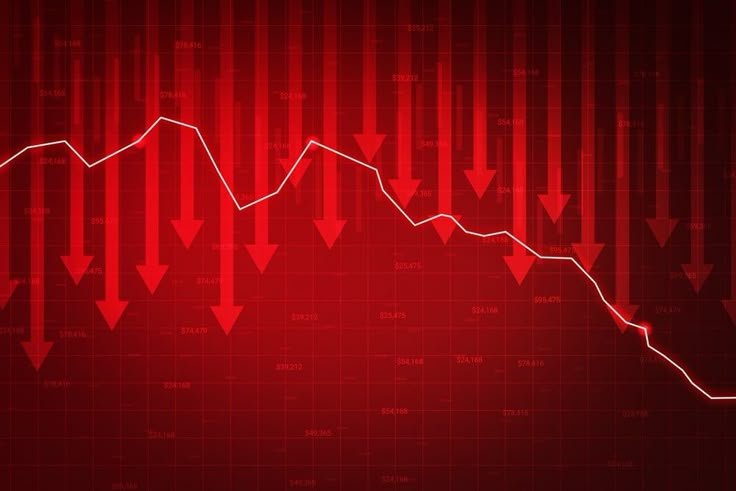Goldman Sachs cut its S&P 500 target again on March 31, 2025, citing growing fears of stagflation as the United States gears up to implement sweeping new tariffs. This move sent shockwaves through Wall Street, as analysts and investors scrambled to reassess risk exposure in the face of slower growth and rising inflation.
The investment banking giant reduced its year-end target for the S&P 500 from 5,200 to 4,800, signaling a more cautious outlook for the rest of 2025. Goldman cited three primary reasons: rising geopolitical tensions, the resurgence of tariffs under President Donald Trump’s second term, and the threat of stagflation – a rare economic condition where inflation rises while growth slows.
Let’s break down the key drivers behind this decision and explore why Goldman Sachs believes the U.S. economy and stock market face a tougher road ahead.
Tariffs Return with a Vengeance
The most immediate trigger for the forecast revision came from President Trump’s renewed push for aggressive trade policies. On March 29, he confirmed that his administration would impose new tariffs on over $1 trillion worth of imports, primarily targeting Chinese technology products, European luxury goods, and select Canadian and Mexican exports.
Markets reacted swiftly. On March 30, the Dow Jones dropped 400 points, the S&P 500 lost 1.3%, and the Nasdaq Composite fell by 2.1%, with tech stocks bearing the brunt of investor anxiety.
Goldman Sachs quickly responded to the announcement, stating that the tariffs would “reduce corporate profit margins, disrupt supply chains, and increase input costs for U.S. companies.” The note also warned that consumers would likely face higher prices for electronics, clothing, and food items — further exacerbating inflation.
Inflation Already Running Hot
Before the tariff news, inflation had already pushed higher. February’s Consumer Price Index (CPI) showed a year-over-year rise of 5.1%, while core inflation — which excludes food and energy — came in at 4.7%. That placed pressure on the Federal Reserve to keep interest rates elevated.
Goldman Sachs analysts argue that the new tariffs will turbocharge price increases. Since many of the targeted goods lack easy domestic substitutes, businesses will have no choice but to pass costs onto consumers.
According to their internal models, the proposed tariffs could add 1.5 percentage points to headline inflation by Q3 2025. This estimate assumes that companies maintain their profit margins, which becomes difficult if consumers reduce spending in response to higher prices.
The Federal Reserve finds itself in a bind. If it raises interest rates to fight inflation, it risks choking off growth. If it pauses or cuts rates, it risks letting inflation spiral further.
Stagflation Becomes a Real Threat
This is where stagflation enters the picture. The term, popularized during the 1970s oil crisis, describes a toxic mix of high inflation, stagnant economic growth, and high unemployment. Investors loathe stagflation because it erodes real returns on stocks and bonds, while offering few safe havens besides gold or commodities.
Goldman Sachs now assigns a 40% probability to a stagflationary environment in the second half of 2025 — up from 15% just one month ago. Their economists see GDP growth slowing to 1.2% in Q3, while inflation may hover above 5%. The labor market also shows signs of softening, with initial jobless claims ticking up and wage growth plateauing.
If this scenario unfolds, corporate earnings could decline, particularly for companies reliant on global supply chains and price-sensitive consumers.
Sector Winners and Losers
Goldman’s forecast identifies several sectors that may struggle in this environment. Technology stocks top the list. Firms like Nvidia, Apple, and AMD depend on intricate supply chains and global semiconductor networks. If tariffs disrupt these channels, delays and higher input costs will likely follow.
Consumer discretionary stocks also face challenges. Companies such as Nike, Lululemon, and Starbucks already operate on thin margins. Higher import costs and reduced consumer purchasing power will compress profits and dampen growth.
However, not all sectors look grim. Energy stocks could benefit from higher commodity prices, while utilities and healthcare — traditionally seen as defensive plays — might offer investors stability. Gold, which recently hit a record high of $3,100 per ounce, may continue to attract capital as investors seek inflation hedges.
Investor Sentiment Turns Cautious
Investor sentiment has shifted sharply since the beginning of March. Just a few weeks ago, market optimism reigned as tech stocks led a broad rally. But the new tariff regime and inflationary fears have shattered that confidence.
The CBOE Volatility Index (VIX), often referred to as the market’s “fear gauge,” jumped to 27.3 on March 31, its highest reading since the start of the year. At the same time, flows into equity ETFs slowed, while money market funds and Treasury bonds attracted more capital.
Goldman Sachs also noted a rise in hedging activity among institutional investors. “Traders are pricing in increased volatility for the next two quarters,” one analyst wrote. “Risk-off sentiment now dominates the conversation.”
The Road Ahead
Goldman’s revised forecast serves as a wake-up call for investors who had priced in a soft landing and corporate resilience. The combination of new tariffs, stubborn inflation, and geopolitical tension forces a rethink of investment strategies for 2025.
To navigate this uncertain environment, Goldman recommends a barbell approach — blending defensive sectors with inflation-protected assets. It urges caution on high-growth tech names and advises clients to hold higher cash levels than usual.
The firm also suggests that investors monitor key macro indicators closely. These include CPI data, PMI surveys, consumer spending reports, and any updates from the Federal Reserve’s next policy meetings.
Conclusion
Goldman Sachs did not pull punches with its latest downgrade. Its message to investors is clear: brace for volatility, rising inflation, and a possible economic slowdown. While opportunities still exist, especially in inflation-resistant assets, the road to stable returns looks far more treacherous than it did just a month ago.
With tariffs looming large and inflation refusing to retreat, 2025 may become a turning point — not just for the U.S. economy, but for how investors value risk, growth, and resilience in a shifting global landscape.




